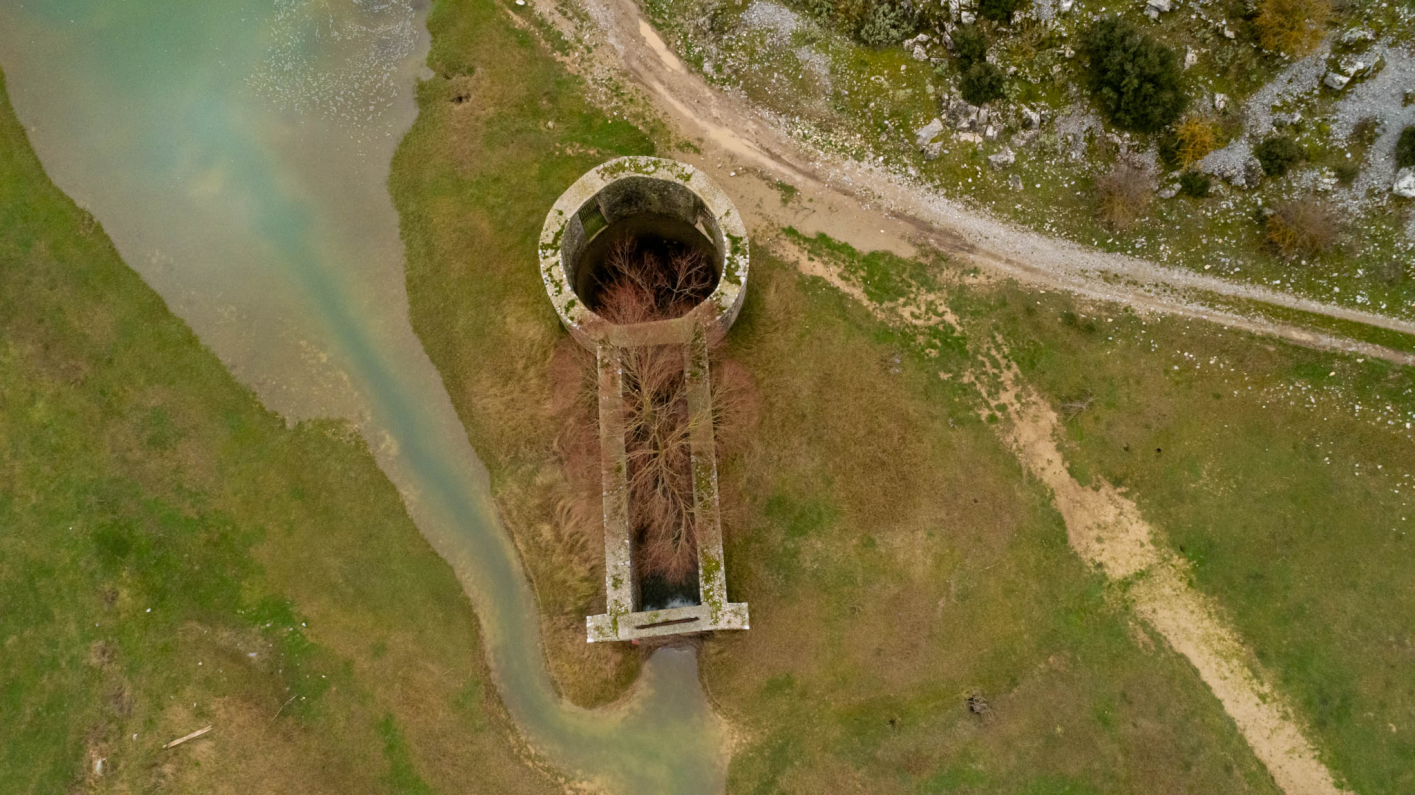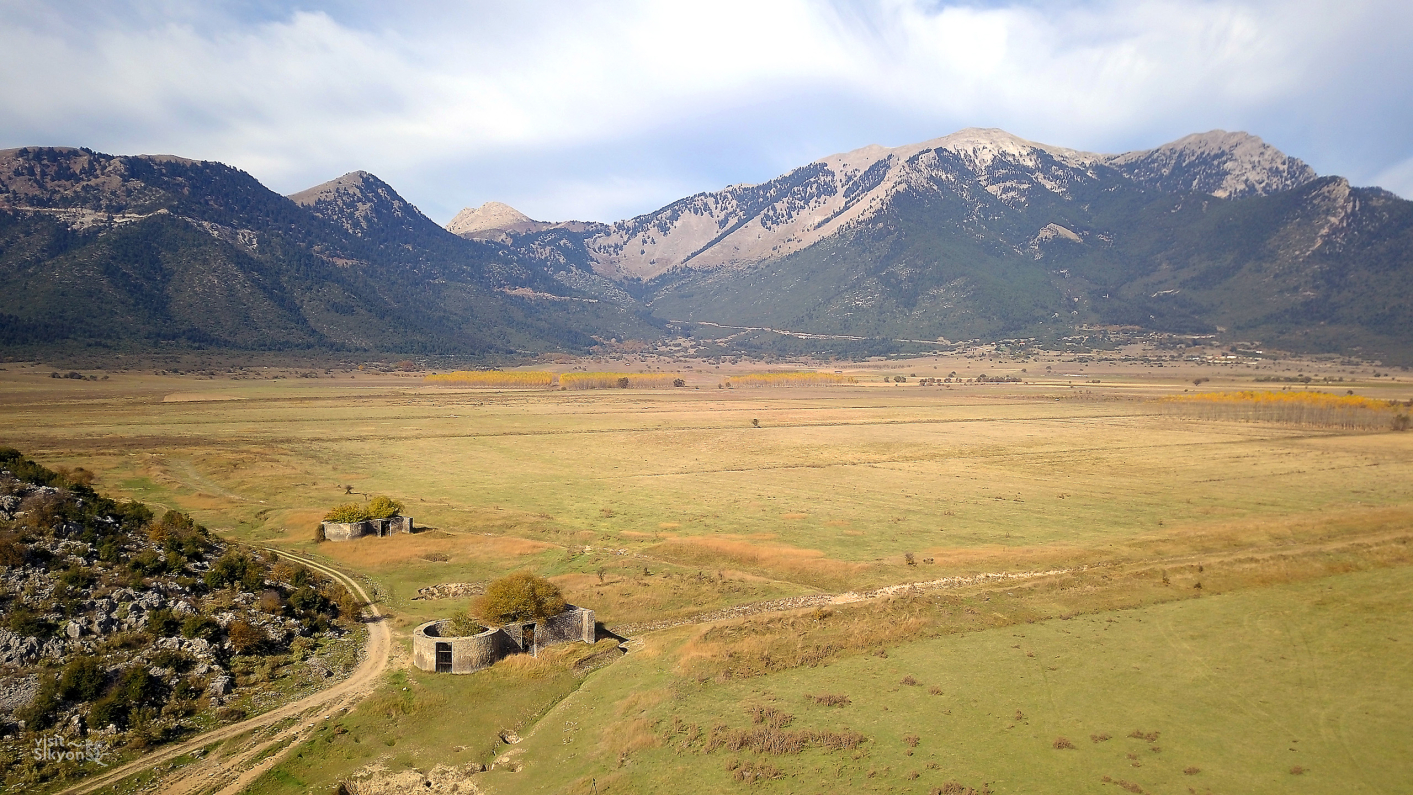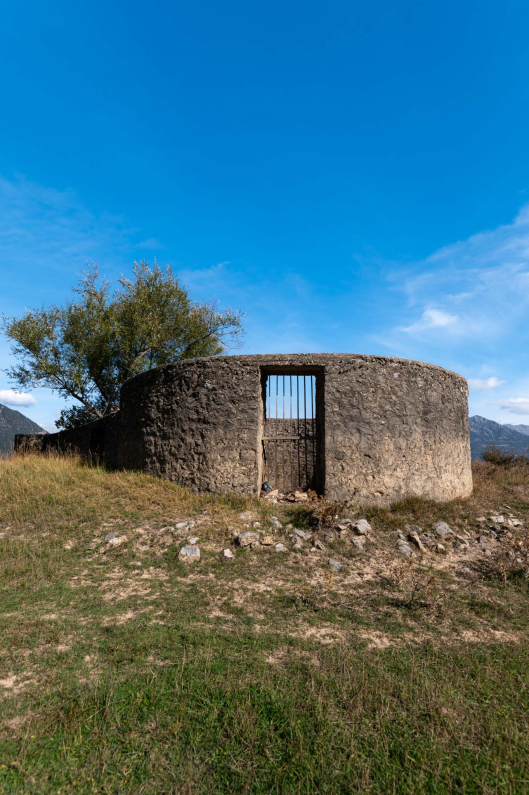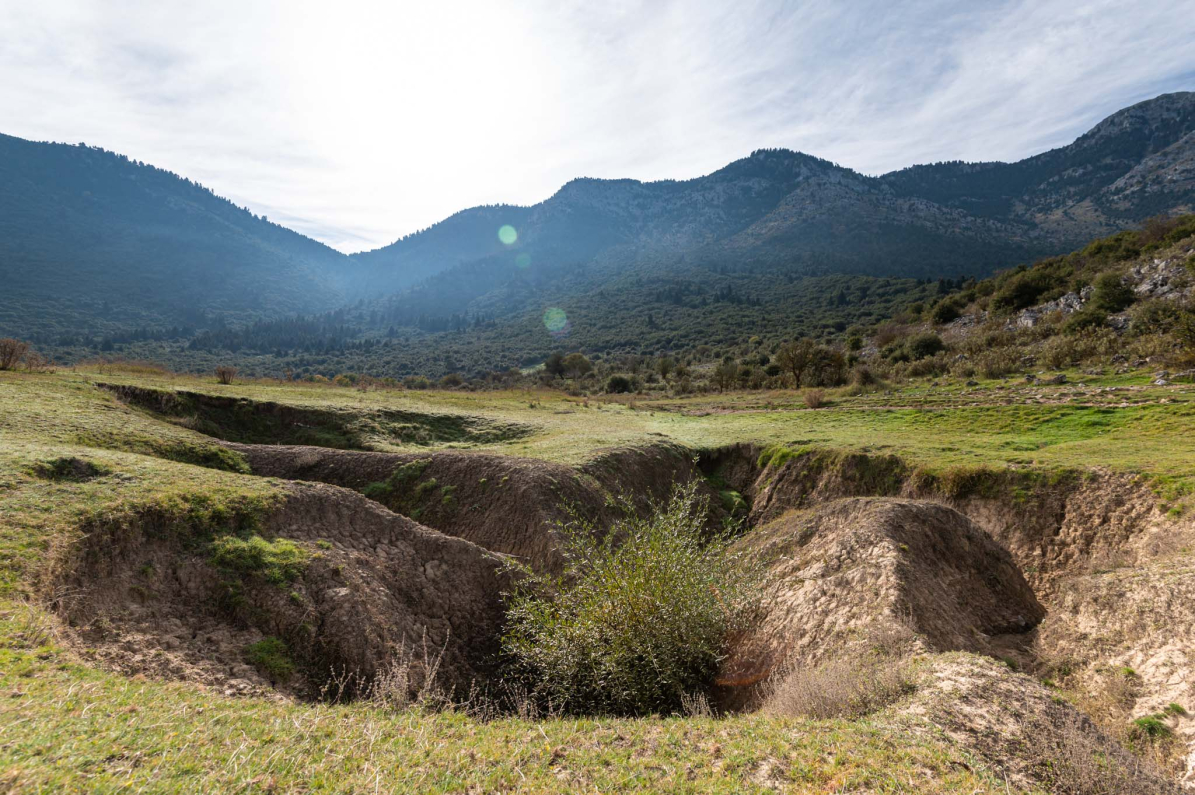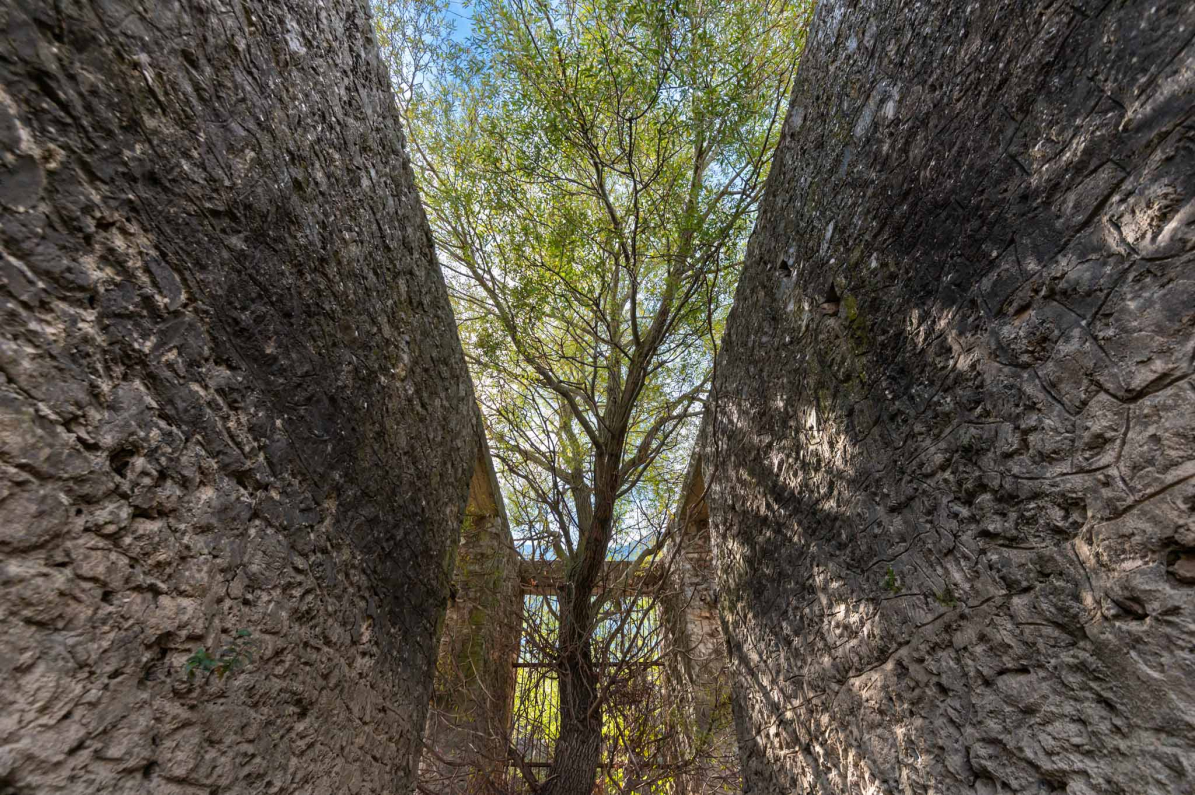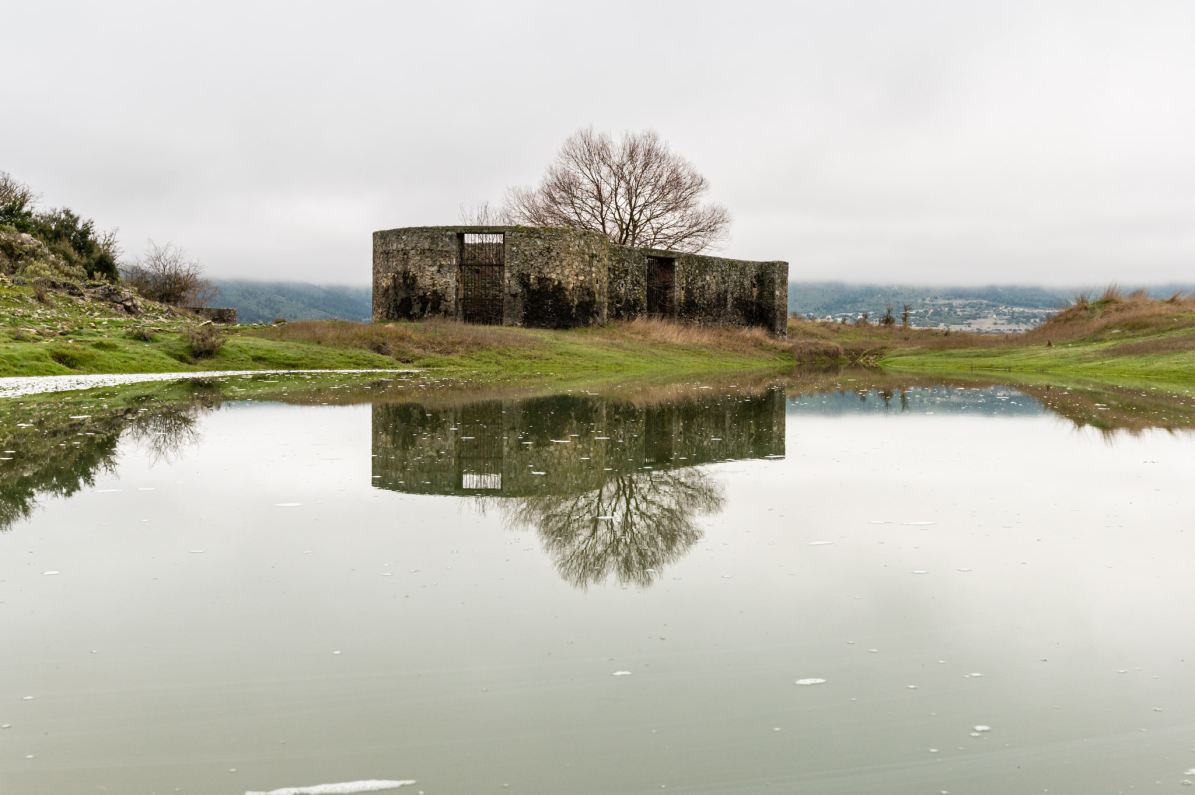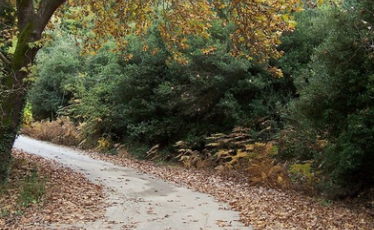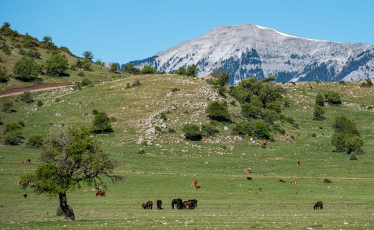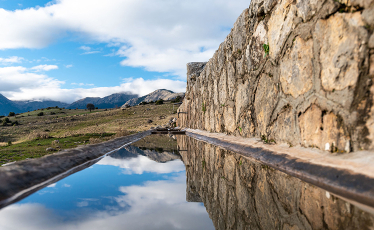The Feneos plain, in the past, frequently transformed into a lake that at its largest spanned up to 194,000 stremmas (approximately 19,400 hectares). This occurred because the two rivers of the Feneos valley, the Olvios and the Doxa, had no natural outlet to the sea, causing their waters to accumulate on the Feneos plateau. Over time, large sinkholes, known as "katavothres," formed at the southern edges of the plateau, providing a natural drainage solution for the excess water.
However, these katavothres would occasionally become blocked, leading to the gradual formation of marshes that would eventually turn into a lake. In ancient times, the Feneos lake and its katavothres inspired numerous myths and stories, underscoring their significance in the lives of the local inhabitants. The fluctuating water levels also prompted repeated relocations of settlements in the area, as reflected in names like Kalyvia, meaning "huts."
The last time the katavothres fully reopened was in 1897, draining the lake and providing the impoverished local population with vast tracts of fertile land for cultivation. Since then, the lake has not reappeared, except as a seasonal body of water, occasionally forming small pools at the foothills of Mount Saita.

